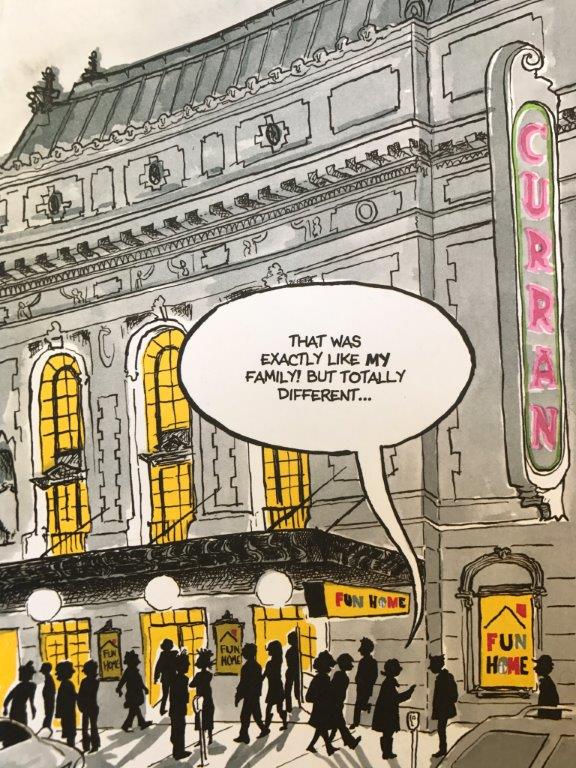
Like Marjane Satrapi's Persepolis, it's a story exhilaratingly suited to graphic memoir form. This breakout book by Alison Bechdel is a darkly funny family tale, pitch-perfectly illustrated with Bechdel's sweetly gothic drawings.

Instead he built walls around himself to behind which to hide or imprison himself, and seems alternately to be lost behind those walls or bursting out in various monstrous ways-but he never seems at ease with who he is.A fresh and brilliantly told memoir from a cult favorite comic artist, marked by gothic twists, a family funeral home, sexual angst, and great books. While she eventually explored and expressed her sexuality and identity openly, Bruce never did. In a way, Bruce’s story can be seen as the opposite of Alison’s.

The novel centers on Alison’s relationship to Bruce, and the possible causes that led to Bruce’s (most likely) suicidal death, including aspects of him that Alison did not know of as a child: his hidden homosexuality or bisexuality and a string of affairs he carried on with teenage boys (many of them his students) throughout his marriage to Alison’s mother, Helen. He and Alison do connect during the later part of Alison’s teenage years through her love of books. He is cold and often absent as a father, and sometimes full of rage.

As a part-time job, Bruce also runs the funeral home that he inherited from his father. Bruce is extremely feminine in Alison’s view, as he’s obsessed with flowers and artificial, surface-level beauty of all kinds, which is acted out in his obsession with restoring the Bechdel family’s old Victorian house. Alison’s father, a provincial English teacher and World War II veteran who loves literature and surface aesthetics of all kinds.


 0 kommentar(er)
0 kommentar(er)
